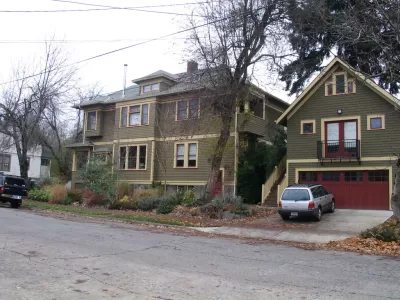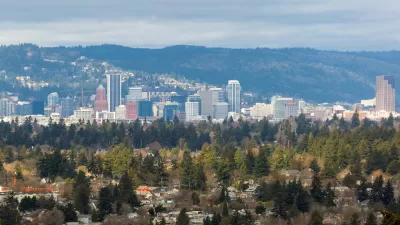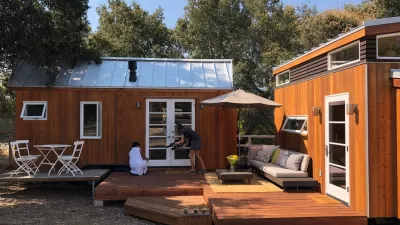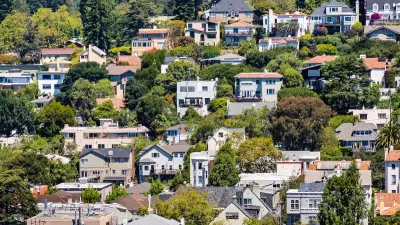They're a good start. But compared to similar policies in cities like Portland and Vancouver, Seattle's new policies around accessory dwelling units may be lackluster.

Earlier this month, Natalie Bicknell writes, Seattle released an environmental impact statement proposing the removal of code barriers to the construction of accessory dwelling units (ADUs) and detached dwelling units (DADUs). "The EIS also proposed size restrictions on construction of new single-family homes. Taken together, the two measures are intended to increase and preserve affordable housing stock throughout the city."
While the measure improves on the city's current policies, Bicknell says it does not favorably compare "to Portland's Residential Infill Project, or the more liberal ADU policies of Vancouver." She cites Dan Bertolet's point-by-point rundown of the Seattle plan's strengths and weaknesses, which include a wild card: a so-called "McMansion ban" on new homes that occupy too much of their lots.
Under the new rules, "new homes could be constructed at a maximum of 2,500 square feet or a floor-area ratio of 0.5, or no more the half the square footage of the lot. Considering that in 2018 the average size of a new single-family home in US is 2,641 square feet, with many new homes exceeding that size, the restriction does represent an improvement."
Portland's size restrictions went further, however, also legalizing housing types like duplexes and corner lot duplexes. In other words, missing middle housing.
See also: Portland Makes ADU Incentives Permanent
FULL STORY: Seattle’s Backyard Cottage Plan Falls Short

Study: Maui’s Plan to Convert Vacation Rentals to Long-Term Housing Could Cause Nearly $1 Billion Economic Loss
The plan would reduce visitor accommodation by 25,% resulting in 1,900 jobs lost.

North Texas Transit Leaders Tout Benefits of TOD for Growing Region
At a summit focused on transit-oriented development, policymakers discussed how North Texas’ expanded light rail system can serve as a tool for economic growth.

Using Old Oil and Gas Wells for Green Energy Storage
Penn State researchers have found that repurposing abandoned oil and gas wells for geothermal-assisted compressed-air energy storage can boost efficiency, reduce environmental risks, and support clean energy and job transitions.

Private Donations Propel Early Restoration of Palisades Playground
Los Angeles has secured over $1.3 million in private funding to restore the Pacific Palisades playground months ahead of schedule, creating a modern, accessible space that supports community healing after recent wildfires.

From Blight to Benefit: Early Results From California’s Equitable Cleanup Program
The Equitable Community Revitalization Grant (ECRG) program is reshaping brownfield redevelopment by prioritizing projects in low-income and environmental justice communities, emphasizing equity, transparency, and community benefits.

Planting Relief: Tackling Las Vegas Heat One Tree at a Time
Nevada Plants, a Las Vegas-based nonprofit, is combating the city’s extreme urban heat by giving away trees to residents in underserved neighborhoods, promoting shade, sustainability, and community health.
Urban Design for Planners 1: Software Tools
This six-course series explores essential urban design concepts using open source software and equips planners with the tools they need to participate fully in the urban design process.
Planning for Universal Design
Learn the tools for implementing Universal Design in planning regulations.
Ascent Environmental
Borough of Carlisle
Institute for Housing and Urban Development Studies (IHS)
City of Grandview
Harvard GSD Executive Education
Toledo-Lucas County Plan Commissions
Salt Lake City
NYU Wagner Graduate School of Public Service





























